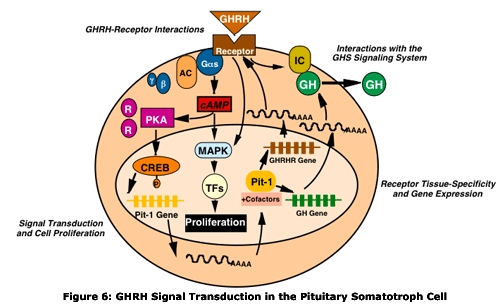(Click here to read our disclaimer)
(Click here to buy T4 (Levothyroxine) 400 mcg per ml x 30ml in our store)
Levothyroxine is often used in research environments to better understand the treatment options for thyroid hormone deficiency in animals. Some studies have indicated that this chemical may have a future use in helping to prevent reoccurring thyroid cancer in such subjects.
In the past, dextrothyroxine was used to treat conditions such as hypercholesterolemia but levothyroxine is being studied as a potential replacement, as dextrothyroxine is known for causing cardiac side effects in the abovementioned subjects.
 Levothyroxine, used in research settings, is typically a synthetic chemical that attempts to mimic the natural secretions which exist in the body. Research is ongoing to better determine the proper way to manufacture these chemicals so they are as accurate as possible when compared to their natural counterparts. This will help both to get accurate results in studies while minimizing side effects in test subjects.
Levothyroxine, used in research settings, is typically a synthetic chemical that attempts to mimic the natural secretions which exist in the body. Research is ongoing to better determine the proper way to manufacture these chemicals so they are as accurate as possible when compared to their natural counterparts. This will help both to get accurate results in studies while minimizing side effects in test subjects.
Effects on Maternal Subclinical Hypothyroidism
The study aimed to determine whether maternal subclinical hypothyroidism would impair the spatial learning in the subsequent offspring.
- Wistar female adult rats were divided into six test groups including a control, subclinical hypothyroid, hypothyroid, subclinical hypothyroid treated with levothyroxine. Groups were treated on the 10th, 13th or 17 gestational days with a view to restoring what’s called as normal thyroid levels.
- Spatial learning in the offspring was determined by assessing the progenies in a water maze test, a potentiating induction (long term) assay and excitatory postsynaptic potential recording.
- The hypothyroid and subclinical hypothyroid groups showed a longer mean latency in water maze tests as well as a lower amplifaction percentage in the slope and amplitude of the field excitatory postsynaptic potential recording than those in the control group.
Groups that were exposed to levothyroxine saw minimal effects on the offspring’s spatial learning as compared to the control groups. While it was determined that maternal subclinical hypothyroidism would impair the spatial learning of the offspring, treatment early on in the pregnancy could potentially offset this effect.
Levothyroxine in Pregnant Rats with Subclinical Hypothyroidism
The study aimed to investigate how maternal subclinical hypothyroidism would influence a developing brain in subjects and whether levothyroxine has potential as a treatment option for this condition.
- A set of 75 thyroidectomized Wistar female rats were randomly divided into groups that had hypothyroism and were treated with levothyroxine either from the embryonic delay at day 10, 13 17 or post-natal day 21. Fifteen of the rats were sham operated controls.
- The results from the levothyroxine groups showed significantly lower body weights than those in the euthyroid groups. Those from the groups treated at day 10, 13 and 17 showed a normal body weight compared to the other groups. Latencies in these groups were longer than those in the controls.
- The barrel cortex of those in the day 10 and 13 groups was very similar to the control group. Distributions of the hypothyroid groups and those treated at day 17 saw a more widespread level of bromodeoxyuridinelabeled cells than those in the other groups.
These conclusions indicate that the maternal presence of hypothyroidism will affect memory and learning in the offspring. However, treating with levothyroxine early in the pregnancy may help to prevent these cells from migrating to the brain where they can cause such damage.
Currently, levothyroxine is not approved for use in humans or study on humans. Dosages and official usage information is not available.
Sources:
http://www.ncbi.nlm.nih.gov/pubmed/22192600
http://www.ncbi.nlm.nih.gov/pubmed/22024639
Click here to view our entire PDF research library
Click here to view/download the PDF version of this article

